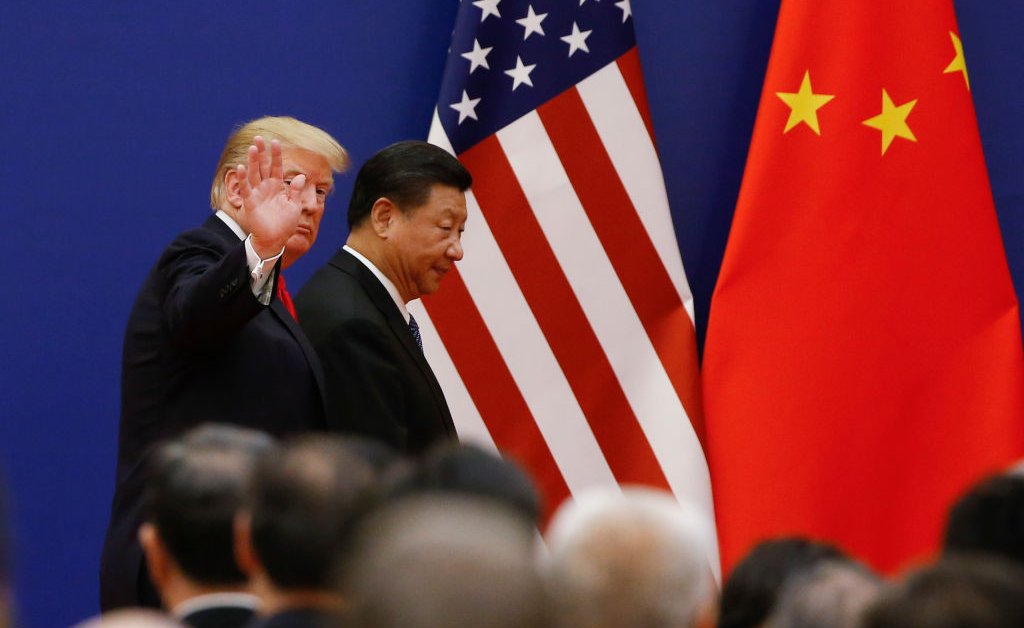The world sighed a breath of relief this week when the U.S. and China agreed to hit pause on unprecedented tariffs between the world’s two most powerful countries. Although the decision is a major breakthrough in the trade war, both sides should take the further step of pursuing détente.
Fortunately, that may be on the cards. That is because only two men—Donald Trump and Xi Jinping—must be convinced. And they have both shown an openness to the idea.
Trump had repeatedly expressed desires to meet with Xi and strike a wide-ranging deal earlier on in his presidency. But the April 2025 tariffs created a bilateral impasse. The 90-day truce announced on Monday has changed that, and Trump has subsequently suggested that a direct call with Xi could be imminent, putting a broader rapprochement back on the agenda.
If they talk, Xi might find Trump a more appealing negotiating partner than Joe Biden. The prior President’s approach to China was highly ideological and competitive, stressing democracy versus autocracy, and seeking to align countries against China—while offering Beijing few incentives for cooperation.
But unlike the Biden team, which focused on technocratically managing tensions, Trump seems to share China’s preference for negotiating fundamental issues. On contentious problems like TikTok’s status in America, Trump has already bucked political orthodoxy, delaying a ban repeatedly to convince China to allow its sale.
The leader duo might conclude that moving toward détente could allow them to better address their shared concerns over domestic economies, growing debt, and social stability. Simply put, Trump and Xi might prefer nation-building at home to escalating a costly and dangerous rivalry. But if the two leaders wait too long, rivalry will gain momentum as hawks on both sides continue pushing for a New Cold War and preparing for a possible armed showdown.
For a reset to begin, both men must be confident that an agreement can be rapidly struck. They need to speak directly but also empower their advisors to make concrete and actionable proposals. And ideally, a phone call leads to a face-to-face summit. This process will not be easy, but if Trump is prepared, he can make history.
The two sides should look to resolve the most acute points of tensions. Trump could begin orchestrating a new trade deal while also trying to defuse the emerging nuclear weapons rivalry. Finding common ground with one could help with the other.
China has rapidly expanded its nuclear arsenal to over 600 warheads and—if U.S. intelligence assessments are correct—is on a path to matching America’s and Russia’s deployed arsenals of about 1,500 warheads each. Trump has repeatedly voiced a desire to negotiate nuclear cuts, yet Beijing has resisted, citing the huge gap between its nuclear arsenal and that of Washington. So how could this dynamic shift?
There are reasons to believe that China is still open to arms control. A significant step forward for U.S.-China nuclear diplomacy could be a joint “sole purpose” declaration that nuclear weapons are only for deterring nuclear attacks. This would address a major Chinese concern, as some in Washington are advocating using nuclear weapons first against Chinese conventional military forces in a Taiwan conflict. Yet the most bold and adroit diplomatic maneuver for Trump could be to induce China into “meeting halfway”: coordinating a trilateral cap between China, Russia, and the U.S. at 1,000 warheads each, averting an unprecedented three-way nuclear weapons race.
That would be a drastic shift, but Trump has shown a willingness to junk political orthodoxy, as this week’s decision to lift sanctions on Syria and meet Ahmed el-Sharaa showed.
The Taiwan issue is also ripe for compromise and would strongly enhance a U.S.-China détente. Trump could be the right leader to forge compromise. Mutual accommodation could involve Washington adhering more closely to its “One China Policy” and removing the U.S. troops working as military advisors on Taiwan’s outer islands. In return, Beijing could ease its nearby force deployments and slow the tempo of its military exercises around Taiwan.
Lowering the temperature on Taiwan would have positive impacts elsewhere. China-Philippines frictions might subside if Washington adopted more caution in building up military forces in the archipelago—a buildup linked to Taiwan conflict scenarios. A wider South China Sea agreement could encompass both joint resource development and reciprocal limits on military deployments.
Likewise, diplomatic compromises could alleviate Korean Peninsula tensions. A new government in Seoul might favor working with Trump on fresh overtures to Pyongyang. American and Chinese diplomats could work together to end North Korea’s direct participation in the Russia-Ukraine War, while jointly reassuring South Korea that it does not need to develop its own nuclear weapons.
A successful Trump-Xi meeting would allow both superpowers to claim diplomatic wins, stave off armed confrontations, and most importantly, keep talking and solving problems. But waiting too long risks closing a golden window of opportunity and allows tensions to fester.
If Trump acts now, while conditions are ripe, he could help secure American peace and prosperity for the 21st century and beyond.
Read the full article here


